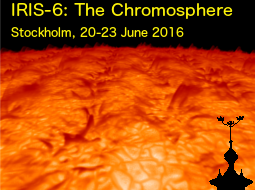Speaker
Magnus Woods
(UCL-Mullard Space Science Laboratory)
Description
At 17:48 UT on the 29th of March 2014, NOAA active region (AR) 12017 produced an X1
flare observed simultaneously by an unprecedented number of observatories. Among
these were the Interface Region Imaging Spectrometer (IRIS) and Hinode’s Extreme
Ultraviolet Imaging Spectrometer (EIS), joint observations from which provide an
excellent opportunity to investigate the dynamics of the solar atmosphere for the
period leading up to the X-flare. This work presents the results of the study
of two areas of the AR: Region A, the site of a C-class flare observed over an hour
prior to the X-flare, and Region B, an area of the filament which shows intriguing
non-thermal velocities and Doppler blue shifts roughly 40 minutes prior to the
X-flare. The strongly blue shifted plasma in Region B is observed approximately
simultaneously in the Chromosphere, Transition region and the Corona. Once triggered,
region B continued to show dynamics in the time leading up to the X-flare. This is
interpreted as the rising of the filament in this highly localised region. This rise
of the filament combined with the preceding C-class flare is suggested to cause the
destabilisation of the magnetic fields in the AR leading to the X-flare and
subsequent filament eruption. We shall also discuss these results in relation
to models of the evolution of the non-potential magnetic field present in this active
region.
Primary author
Magnus Woods
(UCL-Mullard Space Science Laboratory)

